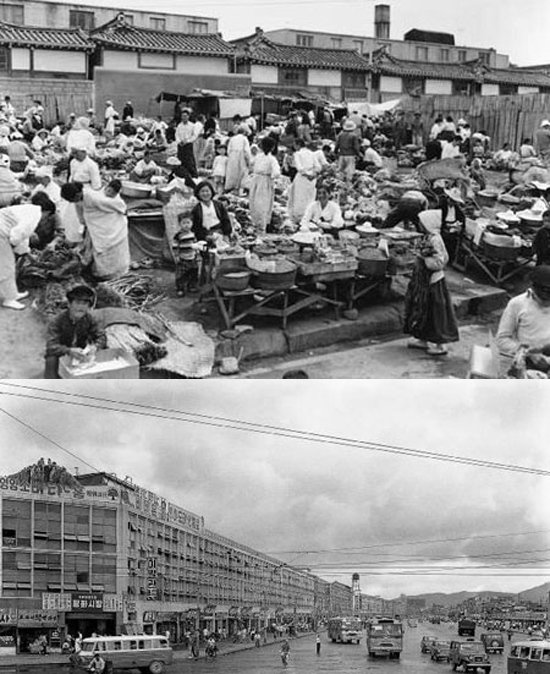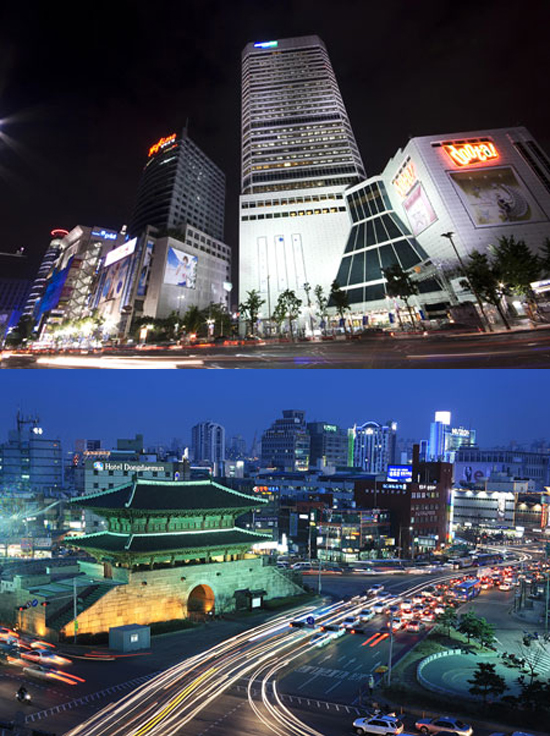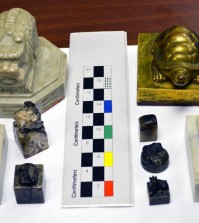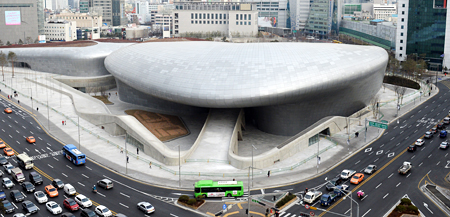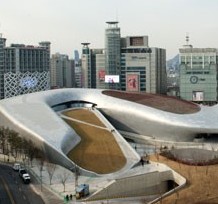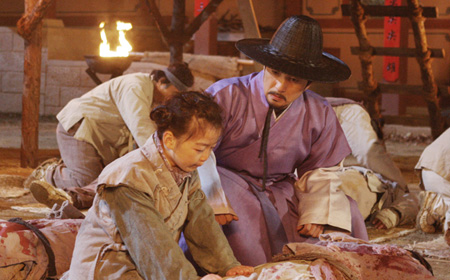- California Assembly OKs highest minimum wage in nation
- S. Korea unveils first graphic cigarette warnings
- US joins with South Korea, Japan in bid to deter North Korea
- LPGA golfer Chun In-gee finally back in action
- S. Korea won’t be top seed in final World Cup qualification round
- US men’s soccer misses 2nd straight Olympics
- US back on track in qualifying with 4-0 win over Guatemala
- High-intensity workout injuries spawn cottage industry
- CDC expands range of Zika mosquitoes into parts of Northeast
- Who knew? ‘The Walking Dead’ is helping families connect
Dongdaemun, Korea’s fashion mecca, tells a unique story
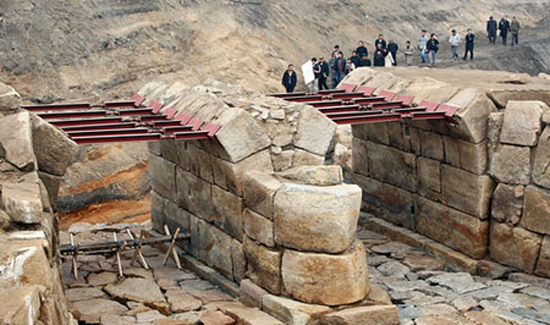
Fortresses and castle walls built during the Joseon Kingdom for military training. (Courtesy of Pressian)
By Kim, Hye-sung
Tourist attractions reveal a nation’s lifestyle, ideas and socio-political changes. Dongdaemun, Korea’s fashion mecca, also tells us a unique story.
Today, Dongdaemun is one of the most popular destinations for foreigners, especially Japanese and Chinese, whose main reason for visiting Korea is shopping. The area posted a record 20 trillion won sales revenue last year, comparable to the total sales of nationwide department stores. But did you know that Dongdaemun has been a shopping center since six centuries ago?
Joseon Kindom (1392- 1897)
Dongdaemun dates back to the Joseon Kingdom. Then Prime Minister Ryu Seong-ryong established the Hunnyeon Dogam (Military Training Agency) to train royal guards in the wake of the Imjin War, the Japanese invasion of Korea, in 1592. The Joseon Kingdom was destroyed, so soldiers were given silk and fabric (which the government kept in storage) instead of money. In turn, these soldiers and their relatives sold these fabrics at night to support their families. This tradition of selling goods between 10 p.m. and 3 a.m. continues today, along with street foods such as “tteokbokki,” or stir-fried rice pasta.
Japanese Rule (1910-1935)
Goods sold in Dongdaemun became more diversified as the Daehan Empire (1897-1910) opened trade with the Qing Dynasty and the West starting in 1882. Western products, Chinese silk and Japanese cotton fabrics were imported. Ironically, Dongdaemun’s commercial development gained momentum after the nation was annexed to Japan. In response to the influx of Japanese people into the Namsan district, four Korean merchants – including Doosan Group founder Park Seung-jik – established the Gwangjang Market in 1905.
Korean merchants gathered to compete with the Japanese merchants who divided the Cheonggye Stream into North and South by investing in the South. Japanese department store Mitsukoshi, built in 1930, is a case in point. However, in defiance of Japanese rule, Korean merchants kept the market alive through the wholesale-retail trade of domestic fabric and daily supplies.
Post Korean War (1955-present)
After the Korean War, Gwanjang Market was destroyed. Dongdaemun was rebuilt over several years and the area developed into a wholesale-retail center for Western clothes, food and drugs as relief aid poured into Korea. In the 1960s, Pyeonghwa Market and Kyungdong Market were created, expanding the Dongdaemun area. These buildings were the precursor to Migliore and Doota (Doosan Tower), and Pyeonghwa Fashion Town, the area’s landmark buildings.
Today, Dongdaemun, New York’s Soho in Seoul, is a world-renown commercial district with young Korean designers selling trendy clothes and accessories. Just as Korea has risen from the ashes of war and achieved the Miracle of the Han, Dongdaemun has also reinvented itself as a fashion mecca, providing both luxury goods and wholesale-retail goods at affordable prices.







